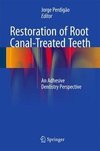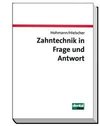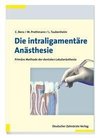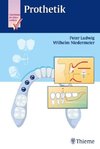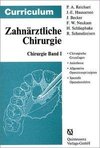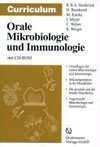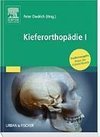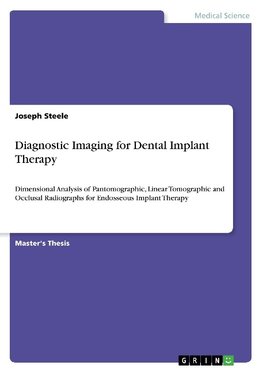
-
 Anglický jazyk
Anglický jazyk
Diagnostic Imaging for Dental Implant Therapy
Autor: Joseph Steele
Master's Thesis from the year 1990 in the subject Medicine - Dentistry, grade: A 3.444 GPA, University of Louisville (University of Louisville Graduate School), course: Master of Science Oral Biology, language: English, abstract: When planning osseointegrated... Viac o knihe
Na objednávku
43.38 €
bežná cena: 49.30 €
O knihe
Master's Thesis from the year 1990 in the subject Medicine - Dentistry, grade: A 3.444 GPA, University of Louisville (University of Louisville Graduate School), course: Master of Science Oral Biology, language: English, abstract: When planning osseointegrated implant therapy, radiological mapping of the prosthesis site is important to detail bone dimensions and quality, and to locate anatomic structures.
Diagnostic imaging techniques for treatment planning in endosseous implant therapy were analyzed for dimensional accuracy. Modified mandibular symphysis was the most accurate occlusal survey (mean percent of error = 24.73), followed by the mandibular symphysis (mean percent error = 30.43) and the cross-sectional technique (mean percent error = 41.27).
The interforaminal width (mental foramen) of the pantomograph can be accurately corrected using pre-exposure intraoral diagnostic wire and the formula:
Distortion factor = Radiographic length of wire / Actual length of wire
Linear tomography (Quint Sectograph) was used to diagnose the cross-sectional anatomy of the maxilla and mandible. The circumferential morphology of the tomograph correlated well with the dissected anatomy. Magnification percentage (13.11 height) was slightly higher than the manufacturer's recommendations.
The loss of teeth and their subsequent replacement has been a perplexing problem in dentistry. Many patients think the loss of teeth is a consequence of aging. In fact, some patients wish to have their teeth removed and replaced with "good dentures." However, dentures are not a replacement for teeth but rather a substitute for no teeth.
Dentists have long realized the benefits of retaining teeth for anchorage of removable or fixed partial dentures and will go to great lengths to save these potential abutments. Therefore, it would naturally follow that in the absence of natural anchorage one would look for an anchor¬age substitute, hence, the evolution of dental implantology.
- Vydavateľstvo: GRIN Verlag
- Rok vydania: 2016
- Formát: Paperback
- Rozmer: 210 x 148 mm
- Jazyk: Anglický jazyk
- ISBN: 9783668207400
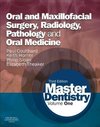
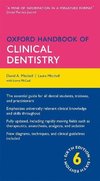

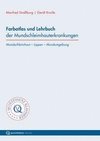
 Nemecký jazyk
Nemecký jazyk 